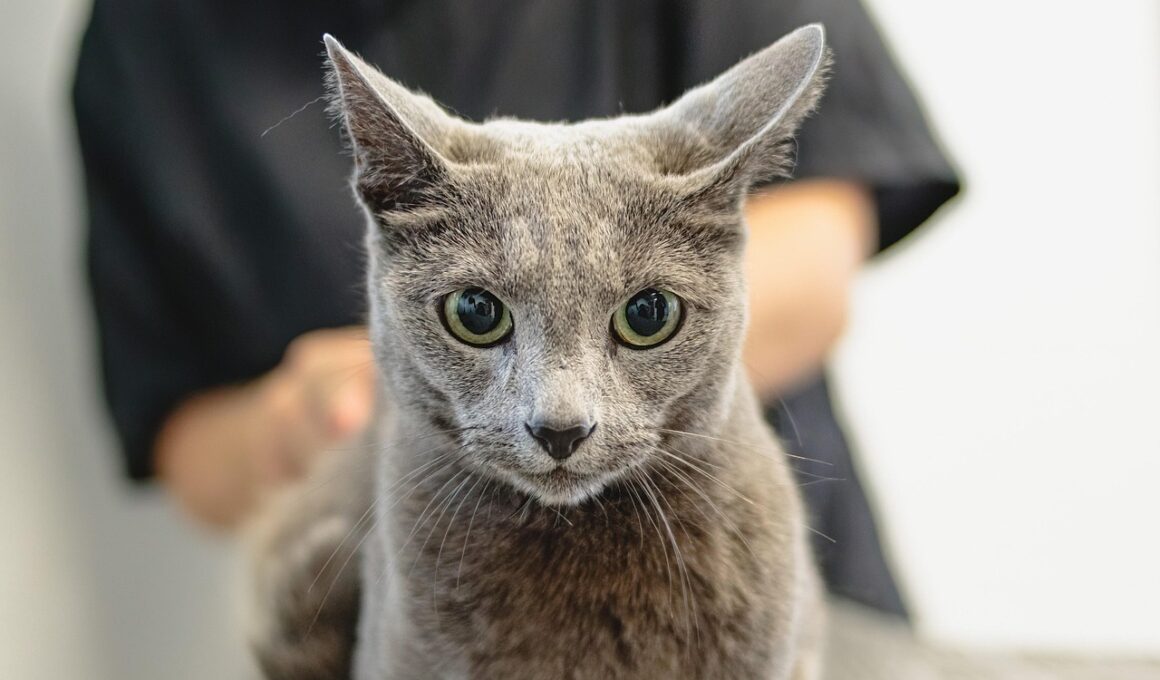Understanding the Financial Aspects of Treating Senior Cat Cancer
Dealing with cancer in senior cats presents unique challenges, particularly financial ones. Pet owners often feel overwhelmed when faced with potential treatment costs. Veterinary expenses for cancer treatment can vary significantly based on the type and stage of the cancer. It’s not uncommon for treatments to cost thousands of dollars. Therefore, planning and understanding these financial obligations is essential for pet owners. Factors like initial diagnoses, treatment plans, and ongoing care all contribute to the overall expense. Additionally, pet insurance policies may vary in coverage, particularly regarding pre-existing conditions such as cancer. Researching different insurance plans that specifically address senior pet care can help alleviate some financial pressure. Furthermore, exploring low-cost clinics or university veterinary hospitals might offer more affordable treatment options. Financial discussions with your veterinarian can also provide insights into payment plans available to assist in managing these costs while ensuring your beloved cat continues to receive appropriate care. This understanding can significantly reduce the stress associated with financial decision-making during such a critical time.
Understanding how to handle emergencies and routine care effectively is crucial when managing a senior cat diagnosed with cancer. Regular veterinary visits become essential for monitoring the condition and managing any side effects from treatments. These visits can accumulate additional costs, necessitating budgeting for both emergencies and regular care. Pet owners should prioritize creating a detailed financial plan that accommodates these varying needs. This budget should include considerations for medications, dietary adjustments, and any potential surgeries required. Some breeds may also have specific health concerns that require added attention. For many, establishing a special savings account specifically for their cat’s healthcare needs can be a helpful strategy. This fund can be incrementally contributed to throughout the year, easing the financial burden during treatment seasons. Furthermore, discussing options for palliative care should be considered, as they focus on comfort and quality of life rather than aggressive treatment—this can sometimes lead to significant cost savings. Overall, being proactive about finances when caring for a senior cat facing cancer is key to ensuring a higher quality of life.
Treatment Options and Their Costs
The financial aspect of treating senior cat cancer heavily depends on the chosen treatment modality. Common methods include surgery, chemotherapy, and radiation therapy, each bearing differing costs. Surgical expenses can range from minor biopsies to major surgeries, with costs typically running between hundreds to thousands of dollars. Chemotherapy, although often perceived as being primarily for humans, is increasingly utilized in veterinary medicine. Its costs can vary significantly depending on the protocols utilized and the frequency of treatments, which may lead to substantial cumulative expenses. On the other hand, radiation therapy, which can be crucial for certain cancer types, is usually very expensive and may involve multiple visits over several weeks. Additionally, supportive care, such as nutritional supplements and pain management medications, adds to the overall financial burden. Thus, it is essential to inquire with veterinary professionals about the costs of these treatments and any alternative approaches. This knowledge can empower pet owners to make informed decisions that balance health outcomes with financial feasibility for their senior feline companions.
Beyond the immediate treatment costs, cancer in senior cats often necessitates ongoing care that can further strain finances. Regular check-ups, follow-up appointments, and medications can result in cumulative expenses that accumulate quickly. Involving a veterinarian in financial discussions can uncover treatment options that provide the best outcomes for the cat while considering budget constraints. Communication about the costs associated with each treatment option is important for transparency. Many pet owners are unaware of the potential ancillary costs and the need for frequent health monitoring that follows. The emotional toll of a cancer diagnosis can also weigh heavily. Therefore, establishing a reliable support system for both emotional and financial aspects can be beneficial. Seeking communities, both online and locally, focused on senior pet care can provide valuable insights and assistance. Some pet owners even create fundraisers for their pets, bringing awareness to the costs involved in cancer treatments. Finding creative funding options, such as grants aimed at pet care, can also contribute to alleviating the financial stress surrounding senior cat cancer treatment.
Pet Insurance for Senior Cats
Pet insurance can serve as a helpful resource for managing the financial challenges of treating senior cat cancer. However, navigating pet insurance can be complex, especially as cats age. Many policies have limitations and exclusions, particularly with regard to pre-existing conditions. Thus, purchasing insurance while the cat is still healthy is ideal. Even so, several companies offer specifically tailored plans for senior cats that can provide invaluable support in times of need. Pet owners should carefully review policy details to ensure coverage for necessary treatments, including specialized oncology care. Moreover, understanding the deductible, reimbursement percentages, and coverage limits is crucial to calculating potential costs when faced with treatments. Some companies also provide wellness plans that can cover routine veterinary visits, which are especially beneficial as cats age. Discussing options with both pet insurers and veterinarians helps create a clear picture of expected expenses. Ultimately, planning for potential veterinary expenses through insurance can mitigate the financial burden associated with cancer treatments in senior cats.
Aside from insurance, pet owners might explore financial assistance programs designed explicitly for pets undergoing treatment. Numerous charities and organizations provide resources aimed at helping pet owners afford cancer care. These programs can offer grants, aid in fundraising efforts, or even connect owners with low-cost treatment facilities. Researching these resources and applying for assistance can greatly ease the financial burden when caring for senior cats with cancer. Additionally, online fundraising platforms allow pet owners to share their story and seek help from their community. Crowdfunding efforts can be effective in spreading awareness about the financial hardships faced due to veterinary expenses. Engaging with social media can also amplify fundraising efforts, reaching a wider audience. It is essential to remain proactive about exploring these avenues, as they can make a significant difference in the care provided to senior cats dealing with cancer. Lastly, it is always advisable to ask local veterinary services about potential partnerships with charitable organizations that could help alleviate financial constraints.
Final Considerations
Understanding the financial complexities of treating senior cat cancer is vital for any responsible pet owner. The impact of decisions made during this challenging time resonates deeply, affecting both the cat and the owner emotionally and financially. Over the years, the expenses associated with monitoring and treating cancer can accumulate, resulting in financial stress. By exploring treatment options early, and discussing costs transparently with veterinarians, pet owners can determine optimal care pathways that align with personal budgets. Additionally, tapping into pet insurance, financial assistance programs, and community resources can significantly enhance the ability to provide comprehensive care. Budgeting effectively for anticipated needs is key, as is being prepared for unexpected developments throughout the treatment process. Owners should also prioritize open conversations about end-of-life care and the well-being of their pet as part of an overall plan. Ultimately, ensuring that conversations about financial aspects take place alongside considerations for the well-being will contribute positively to the quality of life for senior cats facing cancer.
By fostering a supportive environment, pet owners can navigate the complexities of senior cat cancer treatment with greater confidence. Taking proactive steps to educate oneself about their options can lead to informed choices that impact both the health outcomes and financial considerations. Furthermore, leveraging local resources, such as support groups, can lessen the emotional strain caregivers experience. The community support available often provides encouragement and shared experiences that are invaluable. Seeking advice from others in similar situations can yield practical tips to manage both care and costs effectively. Sometimes reaching out to local animal shelters may identify resources that provide assistance. It’s crucial not to underestimate the emotional element involved when dealing with a beloved pet’s diagnosis. Fostering relationships with other cat owners may provide insight into handling the emotional burden of cancer treatment. Health and wellness for senior cats must remain a primary focus, and understanding financial obligations plays an equally important role. With preparation, research, and community support, caring for senior cats diagnosed with cancer can become a fulfilling and manageable journey.


